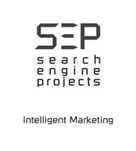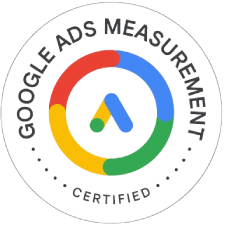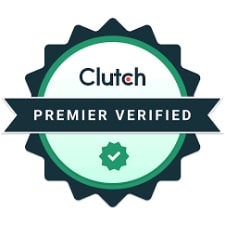How to Convert Leads to Customers?
A Complete Guide for Sustainable Business Growth
Driving traffic to your website is an important milestone, but it’s only the beginning of your customer acquisition journey. The real challenge lies in converting those visitors into paying customers. Businesses often invest heavily in marketing strategies that generate leads but fail to implement structured processes to convert those leads into revenue.
Learn about a comprehensive guide to lead conversion—what it is, why it matters, and how to implement proven strategies to turn prospects into loyal customers.
What Is Lead Conversion?
Lead conversion is the process of turning a potential customer—someone who has shown interest in your product or service—into a paying client. A lead might be someone who subscribes to your newsletter, downloads a free resource, requests a demo, or adds an item to their cart. However, unless they take the final step —such as purchasing, calling, or submitting a form —they remain a lead.
Lead conversion involves nurturing these prospects through intentional communication, value-driven marketing, and trust-building interactions until they are ready to take action.
Why Lead Conversion Matters
Many businesses focus on lead generation but overlook the importance of conversion. Generating thousands of leads is meaningless unless a portion of them becomes paying customers. A strong lead conversion strategy results in:
-
Higher ROI from your marketing spend
-
Increased revenue without needing to expand your audience
-
More efficient use of your sales team’s time
-
Improved customer acquisition and retention
Even a slight improvement in conversion rate can lead to significant revenue growth.
1. Research and Understand Your Target Audience
A successful conversion strategy begins with a deep understanding of the audience. You need to know who your ideal customers are, what they care about, and what problems they’re trying to solve.
Key areas to research:
-
Demographics: Age, location, income, occupation
-
Psychographics: Interests, values, lifestyle
-
Behavioral Data: Pages visited, time on site, devices used
-
Pain Points: What Keeps Them Up at Night? What solution are they seeking?
When you understand what your audience values, you can tailor your messaging, offers, and funnel to address their specific needs.
Pro tip: Use tools like Google Analytics, Hotjar, Meta Audience Insights, and customer surveys to build detailed buyer personas.
2. Identify and Prioritize Qualified Leads
Not all leads are ready to make a purchase. Some are just browsing, while others are actively comparing options. You need to separate marketing-qualified leads (MQLs) from sales-qualified leads (SQLs).
Indicators of Qualified Leads:
-
Visiting pricing pages or service descriptions
-
Submitting contact forms
-
Requesting demos or free trials
-
Interacting with your sales team via chat or email
Utilize lead scoring models to rank leads based on their intent, behavior, and level of engagement. This helps your sales team focus on high-converting opportunities rather than chasing unqualified traffic.

3. Build a Personalized, Two-Way Experience
Today’s customers expect personalization and real-time engagement. Your website and communication channels must foster two-way interactions rather than static, one-size-fits-all experiences.
Ways to engage:
-
Live Chat or AI Chatbots that answer questions instantly
-
Dynamic content based on browsing behavior
-
Interactive tools like quizzes, calculators, or configurators
-
Clear CTAs that guide users step-by-step
The more you interact with your leads in a meaningful way, the more trust you build—and the higher your chances of conversion.
4. Use Behavior-Based Marketing Automation
Automation allows you to engage leads at the right moment with the right message—especially when it’s driven by user behavior.
Examples:
-
Send a follow-up email after a user visits the demo page
-
Trigger a discount offer when a cart is abandoned
-
Deliver a case study after a lead downloads an industry guide
Behavior-based emails significantly outperform generic messages. By tailoring your outreach to each lead’s actions and interests, you demonstrate relevance—and relevance converts.
Tools to consider: ActiveCampaign, HubSpot, Klaviyo, Mailchimp (with automation).
5. Develop a Robust Email Marketing Strategy
Email is still one of the most effective tools for lead nurturing—when used correctly. Instead of blasting the same email to your entire list, use segmentation and personalization to drive engagement.
Key email strategies:
-
Welcome sequences for new subscribers
-
Abandoned cart reminders for e-commerce
-
Product education or tutorials
-
Testimonials and social proof
-
Personalized recommendations
Use your CRM data to create tailored journeys based on your leads’ stage in the sales funnel.
6. Leverage Social Proof Trustild Trust
When a lead is considering a purchase, they seek reassurance that they’re making the right choice. Social proof provides that reassurance through reviews, testimonials, and success stories.
Types of social proof:
-
Customer reviews and star ratings
-
User-generated content (UGC) like photos or videos
-
Client testimonials and case studies
-
Mentions in media or awards
-
Influencer or celebrity endorsements
According to BrightLocal, 98% of consumers read online reviews before making a decision. Social proof isn’t just nice to have—it’s essential for conversion.
7. Retarget and Re-Engage Leads
Retargeting is one of the most effective strategies to bring back leads who didn’t convert the first time. Whether they left the site, abandoned their cart, or forgot your offer, retargeting helps you stay top of mind.
Channels to use:
-
Facebook and Instagram Ads
-
Google Display Ads
-
Email retargeting with dynamic content
-
Text/SMS follow-ups (when appropriate)
Focus on re-engaging leads with fresh offers, limited-time discounts, or additional information that addresses their concerns.
8. Simplify and Optimize Your Conversion Funnel
A long or confusing conversion path can result in lost leads. Every extra step or unclear message is a potential drop-off point.
Funnel optimization tips:
-
Reduce the number of steps between interest and conversion
-
Use short, clear forms
-
Place strong CTAs on high-traffic pages
-
Ensure your checkout process is fast and mobile-friendly
-
Remove unnecessary fields or distractions
Test variations with A/B testing tools like Google Optimize or Optimizely. Minor tweaks can yield significant gains in conversion.
9. Respond Promptly—Speed Is Everything
According to a Harvard Business Review study, companies that contact leads within an hour are 7x more likely to qualify that lead. Time is of the essence.
Best practices:
-
Send auto-responses or confirmations immediately
-
Use call/text follow-ups within 15–30 minutes
-
Leverage CRM alerts for fast outreach
-
Train your team to treat leads with urgency
The faster you respond, the more likely you’ll catch the lead while their interest is still high.
10. Be Patient, Persistent, and Consistent
Most leads don’t convert after one interaction. It may take 7–12 touchpoints before a lead is ready to become a customer. That doesn’t mean they aren’t interested—it means they’re taking their time to evaluate options.
Stay in touch with:
-
Ongoing email campaigns
-
Social media engagement
-
Helpful content like blogs and guides
-
Personalized offers
Utilize CRM tools to set reminders and follow-up tasks, ensuring no lead slips through the cracks.
Bonus Tip: Track, Analyze, and Optimize Constantly

You can’t improve what you don’t measure. Continuously monitor your conversion data to understand where leads are dropping off and why.
Metrics to track:
-
Lead-to-customer conversion rate
-
Time to convert
-
Funnel drop-off points
-
Email open and click-through rates
-
Retargeting ROI
-
Cost per acquisition (CPA)
Use these insights to refine your messaging, offers, and processes.
Final Thoughts
Converting leads into customers requires more than just a landing page and a contact form. It’s a strategic, data-driven process built on:
-
Deep audience understanding
-
Targeted lead nurturing
-
Smart automation
-
Real-time communication
-
ETrustnal trust through social proof
-
Consistent follow-ups and funnel optimization
Every step in the process plays a role in building confidence and guiding your leads toward action.
At Search Engine Projects, we help businesses implement lead conversion strategies that produce measurable results. Whether you’re just starting or looking to optimize your current funnel, our team can help you turn traffic into revenue.
Ready to improve your lead conversion rate? Contact Search Engine Projects today.














